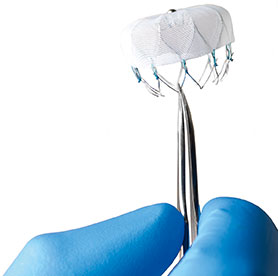
Vivek Y Reddy of the Icahn School of Medicine at Mount Sinai, New York, and colleagues examined the long-term efficacy and safety of Boston Scientific’s Watchman device to achieve left atrial appendage closure in patients with atrial fibrillation in a study published in JAMA.
Studies have suggested that the left atrial appendage is the major source of clots that block blood vessels in patients with atrial fibrillation. This has led to the development of mechanical approaches (via percutaneous catheters) to close the left atrial appendage. Oral anticoagulation with warfarin has been the mainstay of treatment for prevention of cardioembolic stroke in atrial fibrillation. Although effective, warfarin is limited by a need for lifelong coagulation monitoring and multiple medication and food interactions, according to the article.
The study included 707 patients with non-valvular atrial fibrillation and at least one additional stroke risk factor who were randomly assigned to left atrial appendage closure with a device (WATCHMAN; Boston Scientific) (n = 463) or warfarin (n = 244). The study was conducted at 59 hospitals in the USA and Europe.
At an average follow-up of 3.8 years, there were 39 events (stroke, systemic embolism, and cardiovascular death) among 463 patients (8.4%) in the device group, compared with 34 events among 244 patients (13.9%) in the warfarin group, with the difference in the event rate indicating that left atrial appendage closure met pre-specified criteria for both non-inferiority (not worse than) and superiority compared with warfarin. Left atrial appendage closure reduced the relative risk of a composite of these events by 40% (1.5% absolute reduction) compared with warfarin anticoagulation.
Patients in the device group demonstrated lower rates of both cardiovascular death (3.7% vs 9.0% of patients) and all-cause death (12.3% vs 18.0% of patients), with the device-based strategy associated with a 60% relative risk reduction (1.4% absolute reduction) of cardiovascular death and 34% relative reduction (5.7% absolute reduction) in all-cause death. The authors note that these mortality end points are secondary end points, and due to multiplicity of data analysis, there is some uncertainty in the confidence of this conclusion.
Although the device implantation procedure was associated with early complications, the accumulation of complications related to chronic anticoagulation resulted in similar safety profiles for the two groups.












